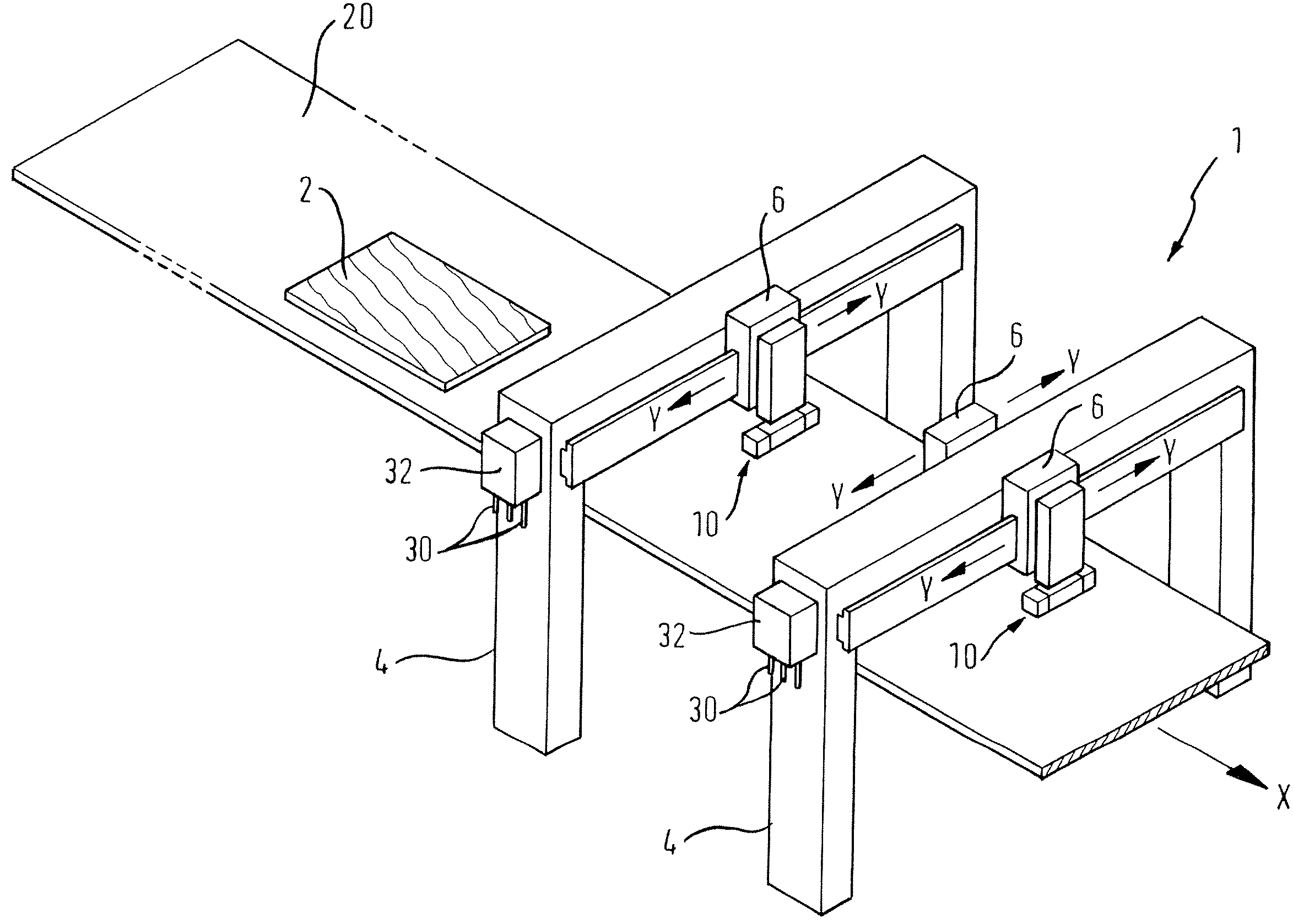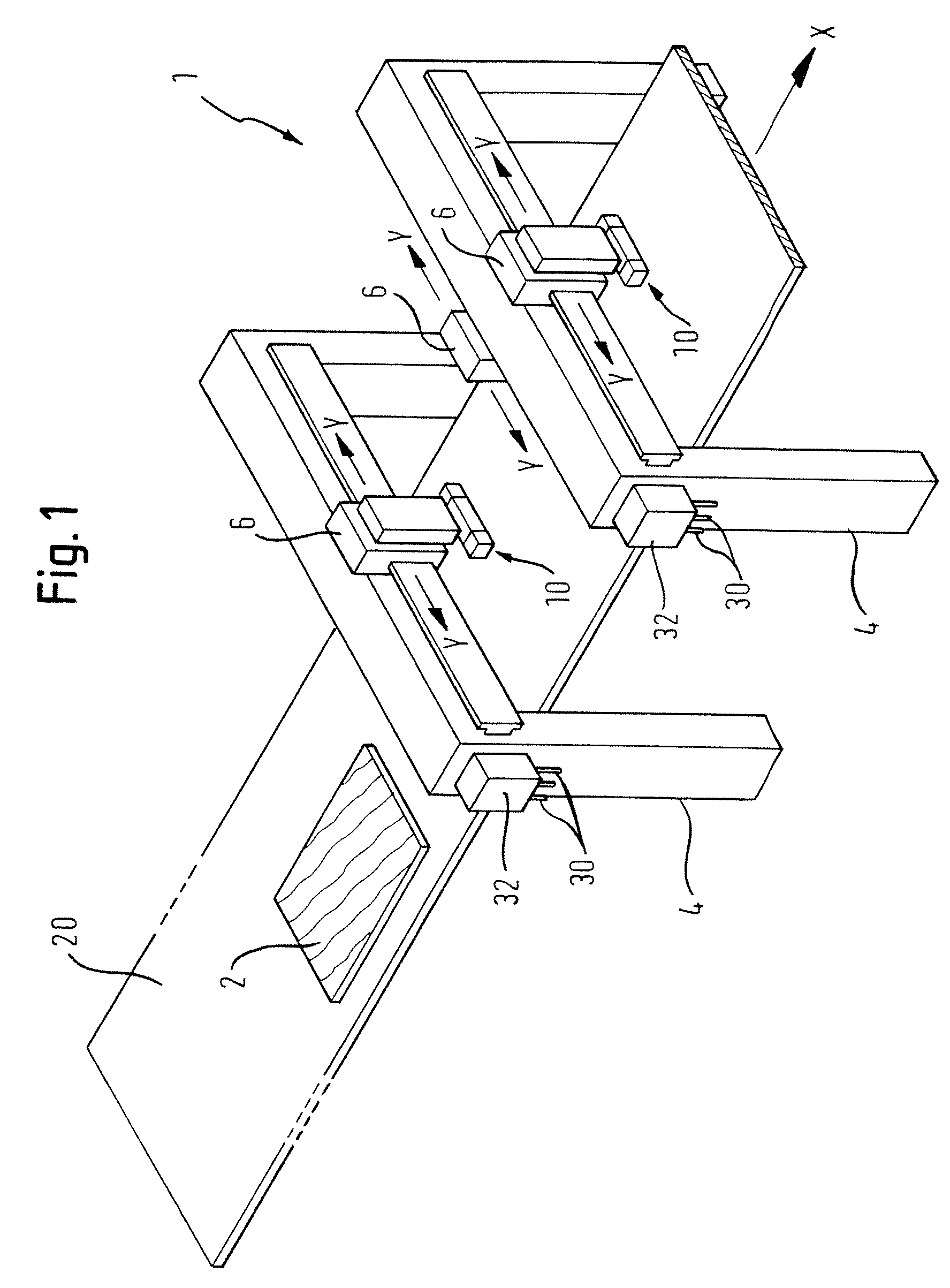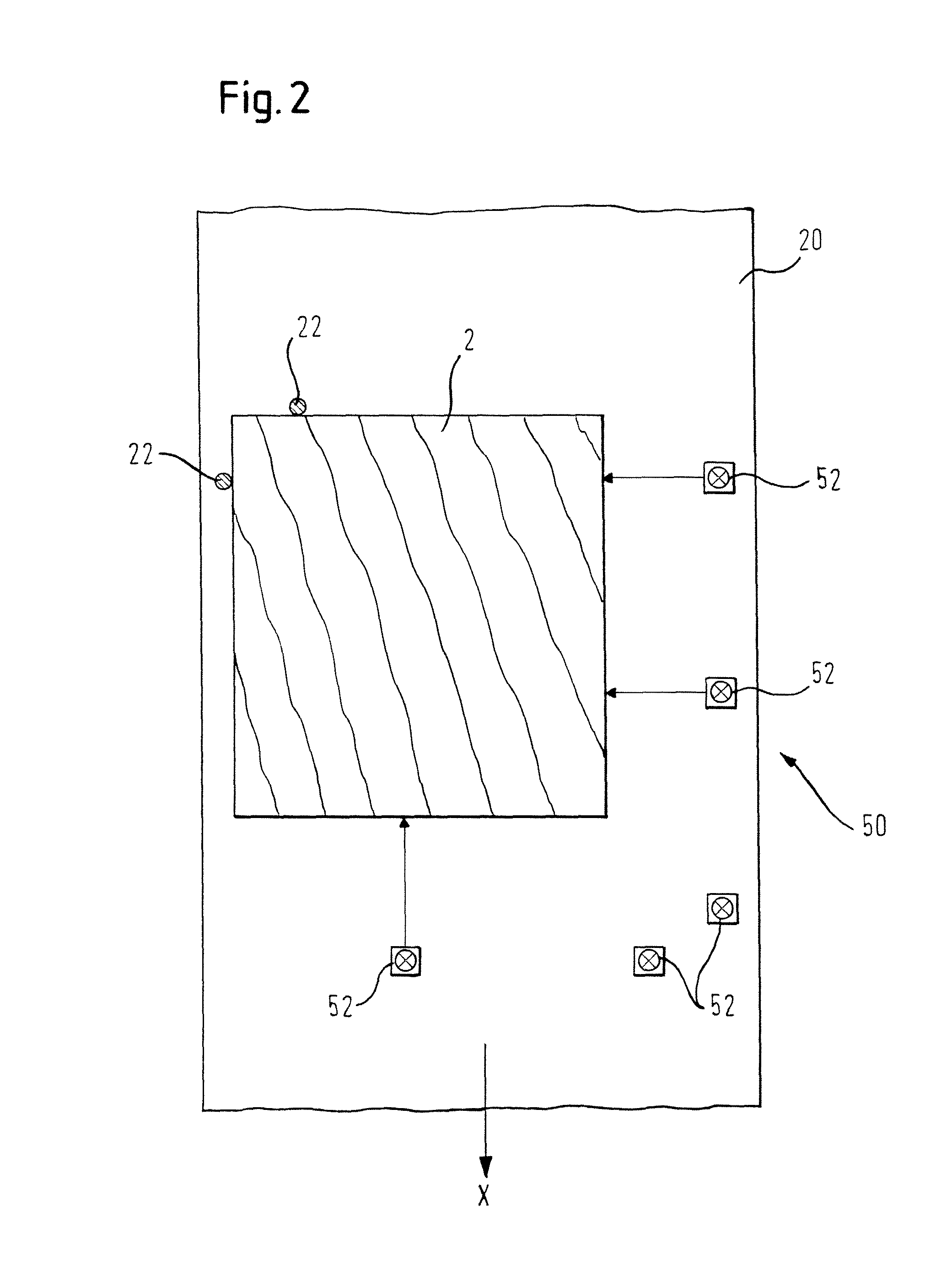Device for patterning workpieces
a technology for workpieces and patterns, applied in the direction of other printing apparatus, decoration arts, printing, etc., can solve the problems of distorted printed images and smudged printing images
- Summary
- Abstract
- Description
- Claims
- Application Information
AI Technical Summary
Benefits of technology
Problems solved by technology
Method used
Image
Examples
Embodiment Construction
[0024]Preferred embodiments of the present invention will be described hereinafter in detail with reference to the accompanying drawings.
[0025]FIG. 1 is a schematic perspective view of a device 1 for patterning workpieces 2 as a preferred embodiment of the present invention. The device is used for patterning and, if appropriate, machining workpieces 2 which, in the present embodiment, consist at least partially of wood, wood materials, plastics materials or the like, such as are frequently used in the field of furniture and kitchen design.
[0026]The device 1 comprises an ink-jet printing means 10 which, in the present embodiment, operates in accordance with the drop-on-demand principle. As may be seen most clearly in FIG. 4, the ink-jet printing means 10 comprises a plurality of nozzles 12 from which drops of ink can be expelled and which, in the present embodiment, are disposed in a plurality of rows, each row being provided for expelling a predetermined colour, for example the colo...
PUM
 Login to View More
Login to View More Abstract
Description
Claims
Application Information
 Login to View More
Login to View More - R&D
- Intellectual Property
- Life Sciences
- Materials
- Tech Scout
- Unparalleled Data Quality
- Higher Quality Content
- 60% Fewer Hallucinations
Browse by: Latest US Patents, China's latest patents, Technical Efficacy Thesaurus, Application Domain, Technology Topic, Popular Technical Reports.
© 2025 PatSnap. All rights reserved.Legal|Privacy policy|Modern Slavery Act Transparency Statement|Sitemap|About US| Contact US: help@patsnap.com



